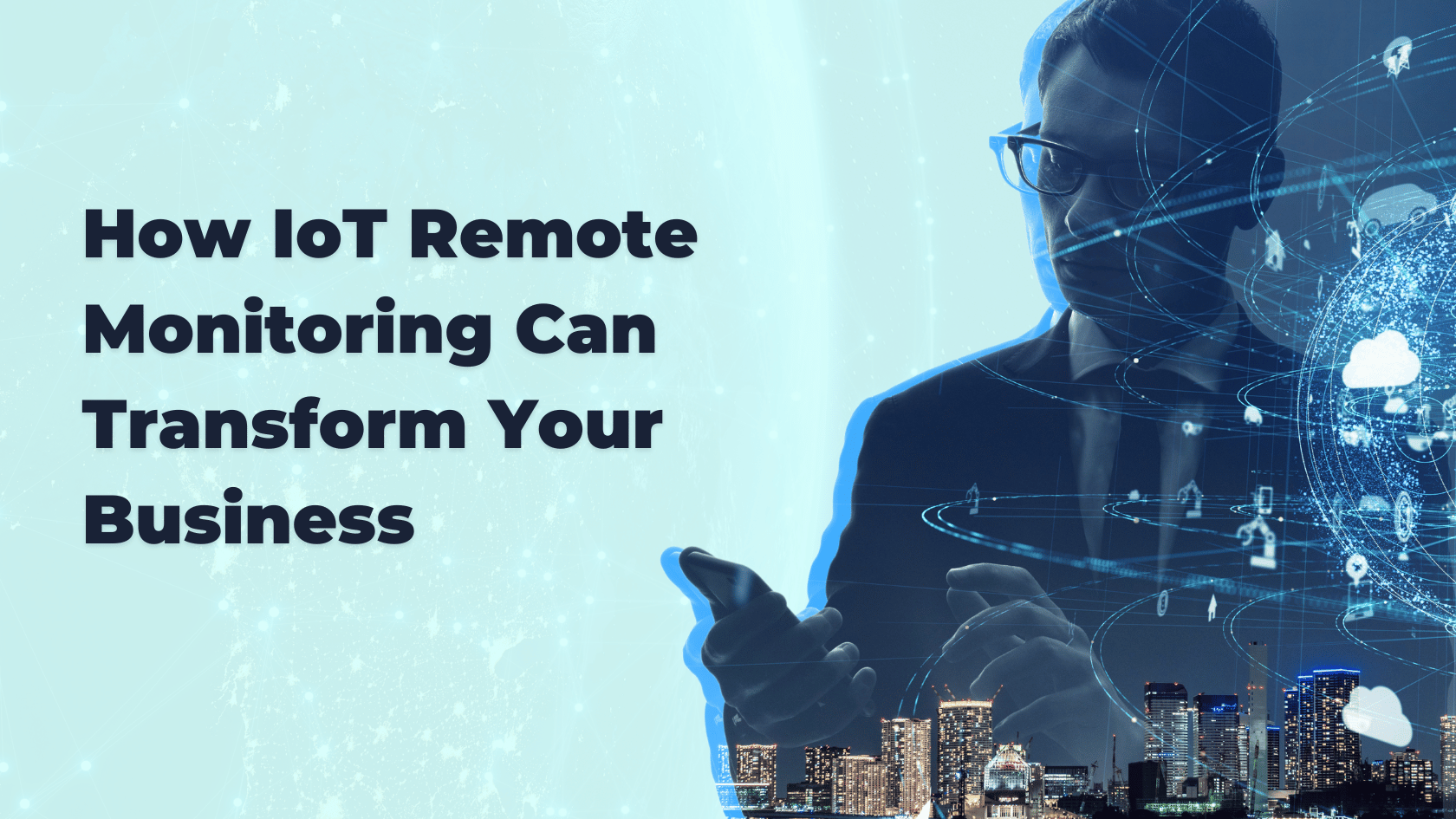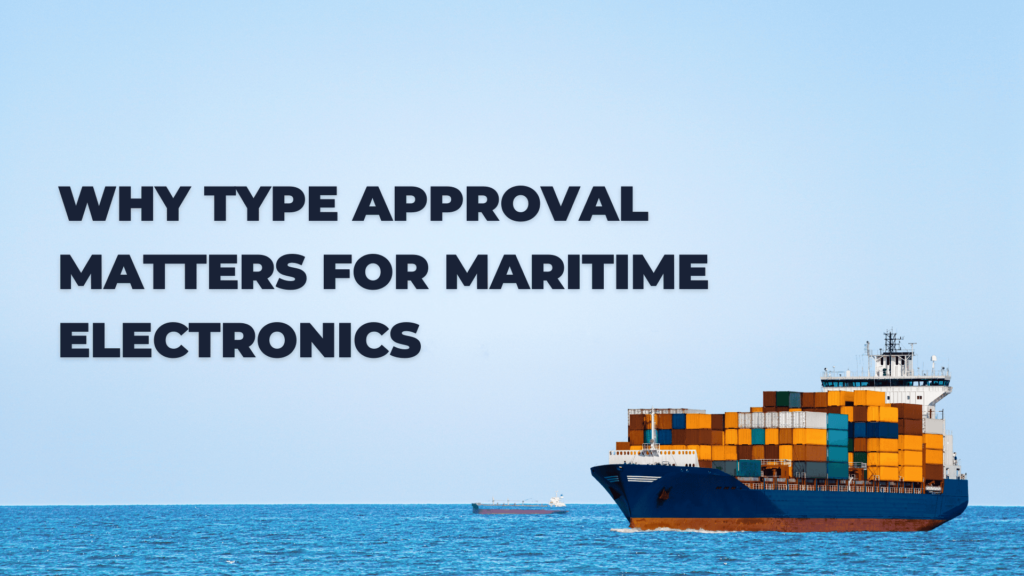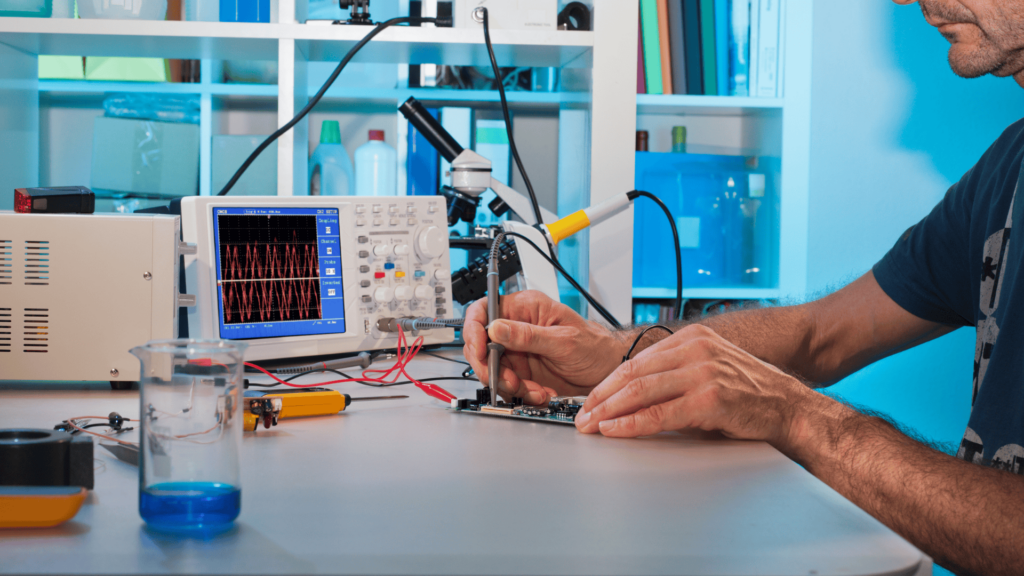How IoT Remote Monitoring Can Transform Your Business
October 2, 2024
Table of contents
IoT remote monitoring is reshaping how businesses and individuals manage their environments, whether at home or work. From optimizing production processes to ensuring safety in high-risk industries, this technology offers a way to stay connected and in control, regardless of the location.
Imagine having the ability to track machinery performance across factories or monitor energy grids across a city—all without stepping foot on-site. With IoT (Internet of Things) remote monitoring, this isn’t a distant possibility; it’s today’s reality.
Getting familiar with IoT remote monitoring can help you:
- Enhance operational efficiency
- Ensure safety and compliance
- Make smarter, data-driven decisions
- Stay on top of emerging trends
- Contribute to sustainability
In this article, we’ll explore IoT remote monitoring’s essential components, its real-world benefits across different industries, applications you can implement today, and key challenges to overcome for successful deployment.
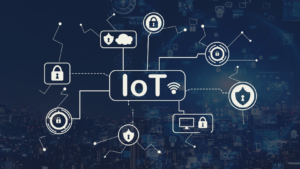
How IoT Remote Monitoring Works
IoT (Internet of Things) remote monitoring is a technology that uses internet-connected sensors and devices to monitor and manage operations from a distance. By collecting real-time data, IoT systems allow users to detect issues early, make immediate adjustments, and ensure systems run smoothly—all without being physically present.
Imagine a factory where IoT sensors track the performance of every machine. If something seems off, like a slight change in vibration, the system can alert the maintenance team before a costly breakdown occurs. In healthcare, wearable devices monitor patients’ vital signs remotely, providing doctors with real-time updates and enabling quick interventions when necessary.
Key Components of IoT Remote Monitoring
IoT remote monitoring setups involve a combination of various technologies that work together to gather, transmit, and analyze data. Understanding these key components is crucial to harnessing the full potential of an IoT system:
Sensors
Sensors are the foundation of any IoT monitoring system. These devices track critical metrics such as temperature, pressure, humidity, and equipment performance. For instance, in a factory, temperature sensors can monitor machinery to prevent overheating, while pressure sensors may track fluid levels in pipes.
Communication Protocols
To transmit the data gathered by sensors, IoT systems rely on communication protocols such as Wi-Fi, Bluetooth, or satellite. The protocol choice depends on your specific needs, including factors like range, data volume, and power consumption. A remote oil rig, for example, might utilize satellite communication to send data due to its isolated location, while a smart home could rely on Wi-Fi.
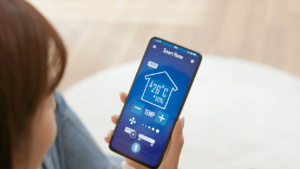
Cloud Platforms
Once data is collected, it’s sent to a cloud platform for storage and analysis. Cloud platforms act as a centralized hub where data is aggregated, processed, and turned into actionable insights. By leveraging cloud computing, businesses can easily access and analyze data from anywhere, making it easier to make informed, data-driven decisions in real-time.
These key components—sensors, communication protocols, and cloud platforms—create a powerful IoT ecosystem that provides valuable insights, helping businesses improve efficiency, enhance safety, and optimize operations.
Benefits of IoT Remote Monitoring
IoT remote monitoring delivers multiple benefits, allowing businesses and individuals to work smarter, not harder. Here IoT remote monitoring can impact key areas of your business.
Improved Operational Efficiency
With IoT remote monitoring, real-time data empowers you to streamline operations. Whether you’re managing a factory floor or overseeing a fleet of vehicles, IoT allows you to identify inefficiencies and make adjustments on the fly. The ability to monitor equipment performance, track processes, and automate tasks means operations can run smoothly with minimal human intervention.
For example, a logistics company using IoT tracking systems can monitor vehicle locations and adjust delivery routes in real-time, optimizing fuel usage and reducing delays.
Predictive Maintenance and Reduced Downtime
Rather than waiting for equipment to fail, IoT remote monitoring enables predictive maintenance, allowing you to anticipate issues before they lead to breakdowns. Sensors continuously monitor machinery for signs of wear and tear, like unusual vibrations or temperature changes. This approach helps businesses prevent costly repairs and downtime.
Imagine a manufacturing plant where machines are equipped with IoT sensors. Instead of halting production for unexpected repairs, the system alerts the maintenance team to service a machine before it fails, reducing downtime and maintenance costs.
Enhanced Decision-Making with Real-Time Insights
Gone are the days of making decisions based on outdated information. IoT remote monitoring delivers live, accurate data that helps you make better, faster decisions. Whether you’re adjusting production schedules in a factory or optimizing water usage on a farm, having real-time insights allows you to respond swiftly to changing conditions.
For instance, a farmer can use IoT sensors to monitor soil moisture and adjust irrigation systems in real-time, leading to healthier crops and more efficient water use.
Cost Savings and Resource Optimization
IoT monitoring not only enhances operational efficiency but also drives significant cost savings. With automation and timely interventions, businesses can reduce energy consumption, labor costs, and unnecessary maintenance expenses. IoT systems enable precise control over processes, helping you allocate resources where needed most.
Take the example of a building manager using IoT to monitor energy consumption. The system can automatically adjust lighting and HVAC systems based on occupancy, resulting in lower utility bills and optimized energy use.
Better Customer Service and Experience
For customer-facing industries, IoT remote monitoring allows businesses to provide more personalized and timely services. Whether it’s through predictive maintenance alerts or real-time customer support, IoT helps you stay ahead of potential issues. For example, in healthcare, remote patient monitoring can alert medical staff to a patient’s needs before a crisis occurs, providing personalized care.
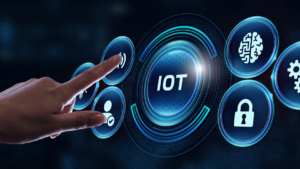
Challenges and Considerations of IoT Remote Monitoring
Despite its numerous advantages, IoT remote monitoring isn’t without its challenges. Here are a few you might encounter:
- Ensuring Data Privacy and Security Concerns: With IoT systems handling vast amounts of sensitive data, safeguarding that information is paramount. Strong cybersecurity measures, such as encryption and access control, are essential to protect against potential breaches and maintain data integrity.
- Addressing Network Connectivity Issues in Remote Areas: While IoT excels in urban environments, maintaining reliable connectivity can be challenging. In these cases, alternative solutions like satellite networks or private LTE may be necessary to ensure continuous data transmission.
- Managing High Initial Costs: While IoT can deliver long-term savings, the upfront costs can be significant. Purchasing sensors, software, and the necessary infrastructure can be substantial. However, careful planning and identifying scalable, cost-effective solutions can help offset these initial investments.
- Handling Data Overload: Collecting massive amounts of data is one thing, but making sense of it is another. Without the right analytics tools, large data sets can quickly become overwhelming. It’s crucial to implement systems that gather data and process it efficiently to deliver actionable insights.
By recognizing and planning for these challenges—data security, connectivity, initial costs, and data management—you can ensure a smoother implementation of your IoT remote monitoring system.
Industries Leveraging IoT Remote Monitoring
IoT remote monitoring is transforming a variety of sectors, enhancing efficiency and productivity. Here’s a look at some key industries that are reaping the benefits:
Manufacturing
In the manufacturing sector, IoT remote monitoring is crucial for tracking factory equipment in real time. By identifying faults or inefficiencies as they occur, manufacturers can implement timely interventions, reducing downtime and optimizing production processes.
Healthcare
In healthcare, remote monitoring devices like wearable heart rate monitors send real-time data to healthcare providers, allowing for early intervention when problems arise. This proactive approach improves patient care and reduces the need for hospital visits.
Energy
IoT technology helps manage energy usage through smart meters and sensors that track real-time consumption patterns. This data allows utility companies to predict peak demand, reduce energy waste, and adjust supply accordingly.
Farmers use IoT sensors to monitor soil moisture, weather conditions, and crop health, helping them make more informed decisions about irrigation and fertilization. Automated systems can adjust water flow based on sensor data, leading to healthier crops and better resource management.
Smart Cities
In urban environments, IoT remote monitoring enhances the management of various city services. From traffic light systems to waste management, these technologies improve operational efficiency and improve residents’ quality of life. By embracing IoT remote monitoring, these industries are not only improving their operations but also paving the way for future innovations.
Conclusion
IoT remote monitoring transforms industries, offering unprecedented visibility, efficiency, and control. The potential applications are endless, from predictive maintenance in factories to remote patient care. As this technology continues to evolve, businesses that embrace IoT remote monitoring today are positioning themselves for long-term success in an increasingly data-driven world.
Whether you’re looking to enhance operational efficiency, reduce costs, or improve customer experiences, IoT remote monitoring offers the tools to make it happen. Don’t wait—explore how IoT solutions can revolutionize your business and prepare you for the future of connectivity.


